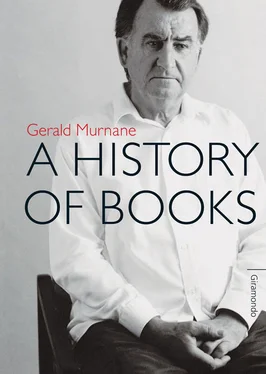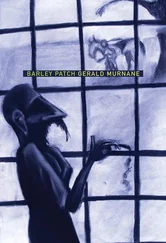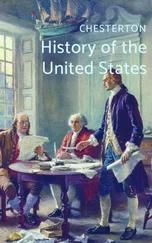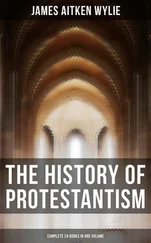The man lying on the couch was at home alone while his wife was at work and while their children were at school. The man and his wife had agreed, more than a year before, that the man would stay at home for two years so that he could write a work of fiction that he had wanted for long to write. Now, the first of the two years had passed. During that year, the man had done all the housework and the shopping that he had previously agreed to do and had likewise cared for his and his wife’s children but he had written only a few pages of the work of fiction that he had wanted for long to write. During much of the time when he might have been writing, the man had read one or another of the many books that he owned. Sometimes, while he read, the man had felt as though he was about to learn some or another secret known only to writers of fiction but later, when he had tried to go on writing his own fiction, he had found that what he wrote brought to his mind only images that had first appeared there while he had been reading one or another book of fiction whereas he had hoped that his writing would bring to his mind images that had never previously appeared there. Whenever he had found this, the man had discarded the pages that he had been writing at the time.
When the man had first lain on the couch in the early afternoon mentioned above, he had had in mind an image of a certain disciple of a certain male character whose name was also the title of a book of fiction that the man had read several years before but had mostly forgotten. The man who lay on the couch had remembered, while he lay, that the book had been first published in the French language ten years before he had been born and that the author of the book, whose name seemed Italian, had been born in Greece and was known as a painter of paintings rather than as an author of books of fiction. The subject matter, so to call it, of many of the author’s paintings was often described as surrealistic. The man lying on the couch had once seen a reproduction of a photograph of one of the author’s paintings. Of the images in the reproduction, the man recalled only an image of a naked woman or of a statue of a naked woman alone in a large square at a time that was surely afternoon on a day of exceptional heat. The man on the couch could recall none of the text of the book of fiction written by the painter. Of the hours that he had spent in reading the book, the man could recall only a few moments when he had learned from the text that the chief character of the fiction had once advised one of his disciples that the clearest and most memorable dreams were those that occurred to a person when he or she had fallen asleep during the afternoon of some or another day of sunshine and heat.
The man lying on the couch had dreamed a clear and memorable dream before he had woken on the hot afternoon. The events of the dream resembled some of the events that had taken place on a certain hot afternoon ten years before. On that afternoon, the man and his wife had attended a wedding in a certain provincial city far from Melbourne. The man’s wife wore to the wedding an expensive dress and hat that she had bought for the occasion. In mid-afternoon, when the guests were arriving at the wedding reception, the man’s wife had asked him to take a photograph of her in her new outfit, as she called it. The man had then gone to fetch his and his wife’s camera from their motor car. When the man met up again with his wife, she was standing alone in a small paved courtyard. She then stood in front of two ornamental columns while the man took several photographs. While his wife posed for the photographs, the man became aware that he and his wife had not been alone together during the previous three days and two evenings. He and she had spent most of that time in a house belonging to relatives of his wife and had had to sleep in separate bedrooms. After the wedding reception, the man and his wife would have to return once more to the house mentioned and to sleep once more in the bedrooms mentioned. On the following morning, they would set out for Melbourne. They would set out early in order to avoid the heat of the day.
While the man was taking photographs of his wife, he foresaw the two of them arriving in the early afternoon at their upstairs flat in a certain inner suburb of Melbourne and soon afterwards lying on their bed wearing only their underclothes and without having debated any matters beforehand.
An image of a marble statue of a naked man appeared in the mind of a boy of ten years. The details of the image, so the boy supposed, were such as might have appeared just then in the mind of a girl of about ten years who was sitting in sight of the boy and was looking into a certain volume of an encyclopedia. The most noticeable of those details were an image-sac and an image-tube that dangled between the image-legs of the image-statue.
The boy and the girl sat at separate desks in the single classroom of a primary school with no more than a dozen pupils. The large window at one side of the classroom overlooked mostly level grassy countryside with a line of trees in the far distance. The trees were the nearest trees of a forest extending on its far side further than the boy had ever travelled in that direction. The boy had once travelled with his parents and his brother on a road of red gravel that led for a few miles in among the overarching trees of the forest. After that day, the boy had sometimes seen in his mind an image of some or another clearing in some or another forest and had wished that he could have gone alone into such a clearing whenever he had feared that some or another person or persons might infer from his, the boy’s, demeanour what sort of images he saw for the time being in his mind or what sort of feelings those images caused in him.
Each of the children in the classroom mentioned had a book in front of him or her, although some children whispered or fidgeted rather than read. The teacher’s desk was in a corner behind the children. The teacher was a man considered by the children to be old but was perhaps no older than forty years. His chair was tilted backwards, and he sat with his head against the wall behind him and with his eyes closed. Some of the children supposed that the teacher had fallen asleep because the afternoon was hot. The oldest girl often asserted that the teacher fell asleep on most afternoons because he drank during every lunch hour from a flask of brandy that he kept inside his jacket. The girl asserted also that her parents were going to report the teacher soon to the district inspector of schools.
At some time during the last hour of every school day, the teacher allowed the children to put away their schoolbooks and to do what he called free reading. Each child then chose a book from the cupboard that was called the library. The boy in whose mind the image-statue had appeared had read every book in the so-called library. Some books he had read several times. On the day when the image-statue was in his mind, he was reading for the third or the fourth time a book that would never be mentioned in any text that he would read during the sixty-one years before he read the page proofs of this present work of fiction. The boy had never taken note of the name of the author of the book. The title of the book comprised two words: a surname in the possessive case and the word Fag . The two words of the title were the only words from the book that the boy would remember, even a few years afterwards, but he would still remember, sixty and more years afterwards, some of what he had seen in his mind while he read and some of what he had felt. He would remember, for example, an image of a boy-man seated at a desk in an upstairs room that he called his study. The image-boy-man sometimes read from an image-book in which the image-words were in the Greek or the Latin language and sometimes wrote on an image-page with an image-pen image-lines of poetry or image-sentences of prose that he himself had composed just then in the one or the other language. The image-boy-man sometimes looked out through the image-window above his image-desk at an image-view of low green image-hills with a line of image-trees in the image-distance. The image-trees were the nearest image-trees of an image-woodland that extended a little way in among the image-hills. The image-boy-man admired the image-trees but had never wished to go alone into the image-woodland.
Читать дальше












